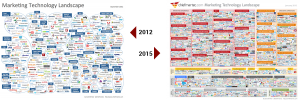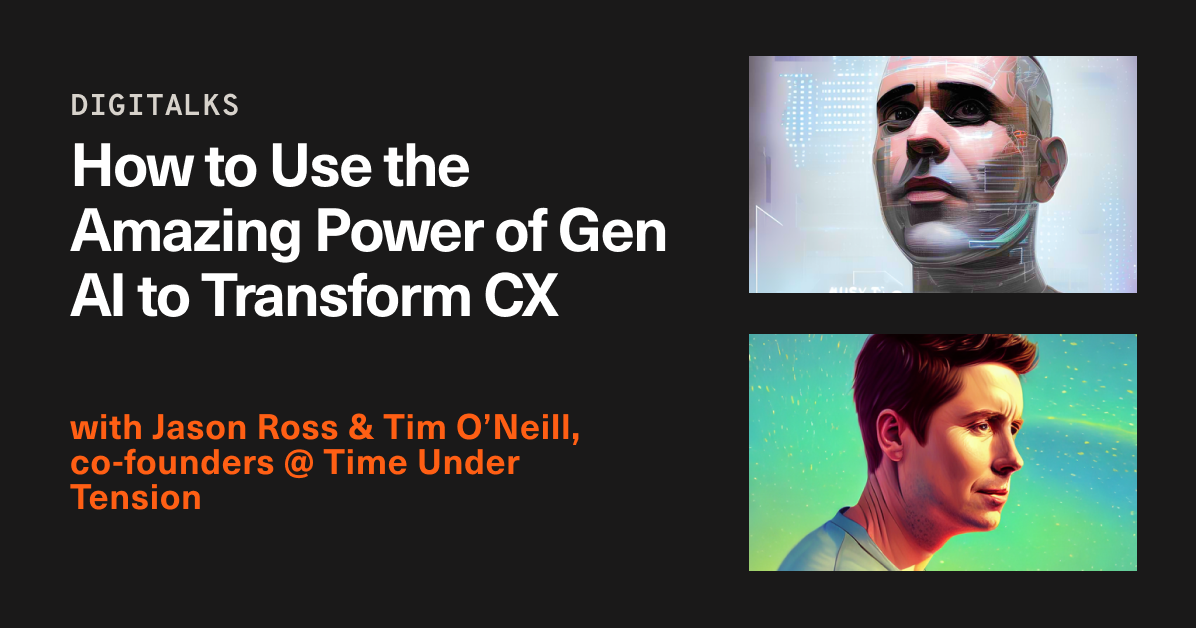Way back in 2012, Gartner Group came out with a bold statement – “By 2017 the CMO will spend more on IT than the CIO”. I must admit that I laughed out loud. The CMOs that I had been working with were struggling to create business cases for low level CRM systems, much less large scale enterprise class technology platforms, so it seemed far-fetched to think this may change so dramatically in five short years.
In December 2015, we sit at the mid-point of this prediction, and it’s a good time to stop and reflect. What have we seen and what does the future hold?
Back to the future
Let’s just cast our minds back to 2012 when Scott Brinker, co-founder and CTO at Ion Interactive and author of the ChiefMartec blog, put together a map of marketing technology to showcase the difficult challenges facing the modern marketer. His map was a confusing mash of technologies, apps, and platforms. It included over 350 companies, and more than 45 categories of technology.
But it was incomplete.
Fast forward to 2015 and the marketing technology map has exploded. There are now almost 2000 companies represented across 43 categories. In fact, the map itself is so crammed, you need a high-resolution version that you can view on screen to zoom and scroll through the categories.

It is eye-watering.
These days, the marketing technology landscape identifies and CHALLENGES all marketers to think about:
- Marketing experiences — From mobile and display, through to content and sales enablement
- Marketing operations — Audience and market data, performance and attribution, to analytics and asset management
- Middleware — Customer data platforms, identity and tag management, and APIs
- Backbone platforms — CRM, platforms/suites, eCommerce, and more
- Infrastructure — Big data, cloud, web development, and marketing environment.
But I can’t see you in amongst all the logos
The thing about most discussions about marketing technology is that they ignore the two – yes TWO – most important factors in the marketing technology mix:
- The customer
- The marketer
Recently I contributed to a discussion around the future of marketing for The Economist. Seth Godin, John Hagel, Aditya Joshi, Marc Mathieu, Jim Stengel and I each shared our vision for the future — five years out. It seemed to me that we were in a rush to automate ourselves out of the marketing equation — as if we were just another hamster stuck in the brand wheel — and that this effort was self-defeating and the very worst of short term thinking:
I think we're in a part of the cycle where what was old becomes new again and what we think is important now will become more transactional. I came up with an acronym, PANDA, to talk about how marketing is changing.
The “P” is for “purpose”… “A” is for “analytics” … The “N” is for “networks”… The “D” is “digital”… The “A” is “art”
I think we're going to start seeing less technical stuff. We're going to see how our creative thoughts really handle digital in a creative way. It's going to be more fun and more interesting, and the combination of the artistic and the technical will get us to a more emotional and engaging place.
In marketing we are constantly seeking our unique value proposition. We are constantly striving to deeply and emotionally engage with our customers. And the best opportunity to do this, is not by deploying more technology, but by investing in both our customer’s experience and our marketing team’s skills.
This is what A is for ART is all about — moving from being a marketer who uses technology to deliver a transactional experience, to being a marketer who uses technology as part of our creative arsenal to deliver transformative and remarkable customer experiences.
It’s a fundamental change in the way that we view technology, and it prompts other discussions:
- Have we planned and trained our teams across the Five Dimensions of Future Marketing Capability?
- Has our Board and Executive Leadership got the right mix of skills and experience to guide us responsibly?
- Can we take advantage of startup approaches and techniques like growth hacking to bridge the gap?
And as I say in some of my presentations, the clear message is simple — “don’t be a robot”.
Latest.

The Key to Being Job-Ready is Being Resume-Ready
Job Seeker

Are Companies Taking Advantage Of Job Seekers In A Competitive Market?
Industry Trends, Hiring Insights, Job Seeker

How To Use The Amazing Power Of Gen AI To Transform CX
Technology, Video Resources




